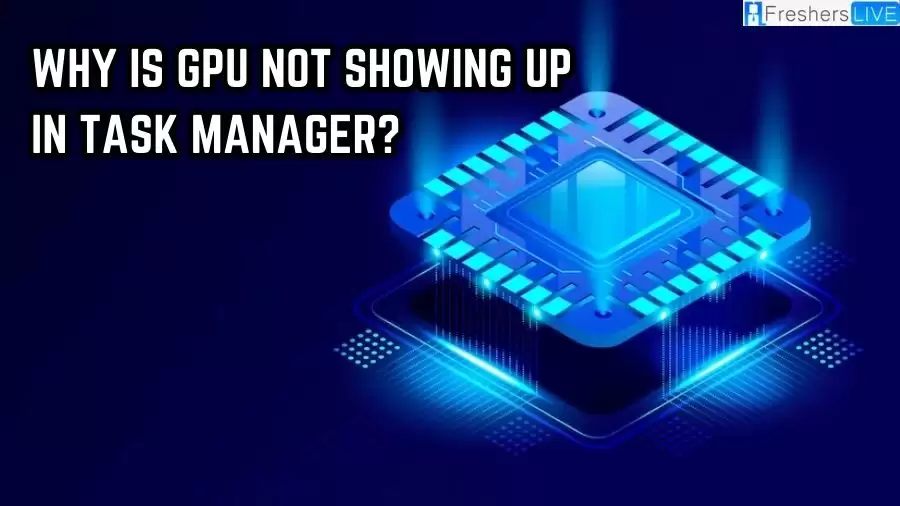Why is GPU Not Showing Up in Task Manager? How to Fix GPU Not Showing Up in Task Manager?
by Mathelene
Updated Jul 04, 2023

GPU Not Showing Up in Task Manager
If you're someone who is curious about technology or a dedicated gamer, you may often rely on the task manager to monitor your GPU's performance. However, it can be quite frustrating to discover that the GPU is not appearing in the task manager when you need it.
In this article, we will explore various possible reasons why the GPU might not be visible in the task manager. While we won't provide specific fixes, we will discuss potential solutions to help you address the issue and get your GPU displayed in the task manager once again.
Why is GPU Not Showing Up in Task Manager?
Here are several possible reasons why the GPU may not appear in the task manager:
How to Fix Gpu Not Showing Up in Task Manager?
Possible Solutions for GPU Not Appearing in Task Manager
Solution 1
Register Counter Names and Registry Settings To enable the GPU in the task manager, you can try registering counter names and registry settings using the "lodctr /R" command in PowerShell. Follow these steps:
Solution 2
Restart Your PC Restarting the PC can often resolve existing problems and reload all startup items and drivers. This may help in detecting the GPU. Follow these steps:
Solution 3
Update Your Operating System Regularly updating your operating system can fix bugs and improve compatibility. It might also resolve the issue of the GPU not appearing in the task manager. Follow these steps:
Solution 4
Reset Your BIOS Resetting your BIOS to its factory default settings can help if misconfigured BIOS settings are causing the GPU to not appear in the task manager. Follow these steps:
Solution 5
Update Your Display Driver Updating your display driver can improve GPU detection and performance. Follow these steps:
Solution 6
Rollback Display Driver If a faulty display driver update is causing the issue, rolling back to a previous version might help. Follow these steps:
Solution 7
Check Your Chipset Driver Software The visibility of the GPU in the task manager can depend on the chipset driver software. Ensure that your chipset driver software supports this feature. Visit the manufacturer's website to check for chipset specifications and download any updated chipset driver software.
Solution 8
Fix Corrupted System Files Corrupted or missing system files can cause issues with the task manager's ability to display the GPU. You can perform a diagnostic test using the DISM tool and then run an SFC scan to fix the problem. Follow these steps:
Why is GPU Not Showing Up in Task Manager? - FAQs
There can be several reasons for this issue, such as outdated operating system, faulty display adapter driver, buggy driver updates, faulty chipset driver, or corrupted system files.
A display adapter driver is software that allows the operating system to communicate with the graphics card or GPU.
To rollback a display driver, you can go to the Device Manager, locate the display adapter, open its properties, and choose the option to rollback the driver.
Updating the operating system regularly is essential to ensure optimal performance and security.







